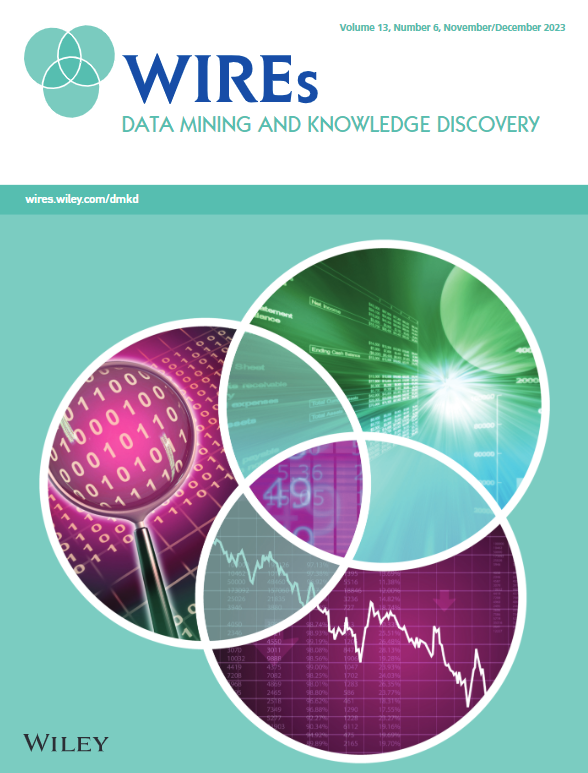Data mining privacy preserving: Research agenda
IF 11.7
2区 计算机科学
Q1 COMPUTER SCIENCE, ARTIFICIAL INTELLIGENCE
Wiley Interdisciplinary Reviews-Data Mining and Knowledge Discovery
Pub Date : 2020-10-18
DOI:10.1002/widm.1392
引用次数: 13
Abstract
In the modern days, the amount of the data and information is increasing along with their accessibility and availability, due to the Internet and social media. To be able to search this vast data set and to discover unknown useful data patterns and predictions, the data mining method is used. Data mining allows for unrelated data to be connected in a meaningful way, to analyze the data, and to represent the results in the form of useful data patterns and predictions that help and predict future behavior. The process of data mining can potentially violate sensitive and personal data. Individual privacy is under attack if some of the information leaks and reveals the identity of a person whose personal data were used in the data mining process. There are many privacy‐preserving data mining (PPDM) techniques and methods that have a task to preserve the privacy and sensitive data while providing accurate data mining results at the same time. PPDM techniques and methods incorporate different approaches that protect data in the process of data mining. The methodology that was used in this article is the systematic literature review and bibliometric analysis. This article identifieds the current trends, techniques, and methods that are being used in the privacy‐preserving data mining field to make a clear and concise classification of the PPDM methods and techniques with possibly identifying new methods and techniques that were not included in the previous classification, and to emphasize the future research directions.数据挖掘隐私保护:研究议程
在现代,由于互联网和社交媒体,数据和信息的数量随着其可访问性和可用性而增加。为了能够搜索这个庞大的数据集并发现未知的有用数据模式和预测,使用了数据挖掘方法。数据挖掘允许以有意义的方式将不相关的数据连接起来,分析数据,并以有用的数据模式和预测的形式表示结果,以帮助和预测未来的行为。数据挖掘的过程可能会泄露敏感的个人数据。如果在数据挖掘过程中某些信息泄露并暴露了个人数据被使用者的身份,那么个人隐私就受到了攻击。有许多隐私保护数据挖掘(PPDM)技术和方法,其任务是在提供准确的数据挖掘结果的同时保护隐私和敏感数据。PPDM技术和方法结合了在数据挖掘过程中保护数据的不同方法。本文采用的研究方法是系统的文献综述和文献计量分析。本文通过对当前隐私保护数据挖掘领域中使用的趋势、技术和方法的分析,对PPDM方法和技术进行了清晰、简明的分类,并可能识别出以前分类中未包括的新方法和技术,并强调了未来的研究方向。
本文章由计算机程序翻译,如有差异,请以英文原文为准。
求助全文
约1分钟内获得全文
求助全文
来源期刊

Wiley Interdisciplinary Reviews-Data Mining and Knowledge Discovery
COMPUTER SCIENCE, ARTIFICIAL INTELLIGENCE-COMPUTER SCIENCE, THEORY & METHODS
CiteScore
22.70
自引率
2.60%
发文量
39
审稿时长
>12 weeks
期刊介绍:
The goals of Wiley Interdisciplinary Reviews-Data Mining and Knowledge Discovery (WIREs DMKD) are multifaceted. Firstly, the journal aims to provide a comprehensive overview of the current state of data mining and knowledge discovery by featuring ongoing reviews authored by leading researchers. Secondly, it seeks to highlight the interdisciplinary nature of the field by presenting articles from diverse perspectives, covering various application areas such as technology, business, healthcare, education, government, society, and culture. Thirdly, WIREs DMKD endeavors to keep pace with the rapid advancements in data mining and knowledge discovery through regular content updates. Lastly, the journal strives to promote active engagement in the field by presenting its accomplishments and challenges in an accessible manner to a broad audience. The content of WIREs DMKD is intended to benefit upper-level undergraduate and postgraduate students, teaching and research professors in academic programs, as well as scientists and research managers in industry.
 求助内容:
求助内容: 应助结果提醒方式:
应助结果提醒方式:


